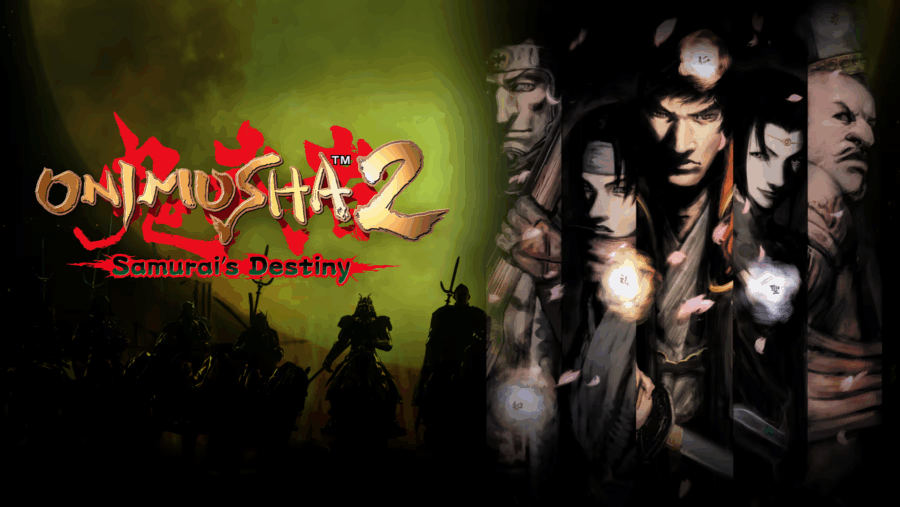Onimusha 2: Samurai’s Destiny Remaster marks a welcome return for Capcom’s underappreciated action series. Following the 2019 remaster of Onimusha: Warlords, fans had long hoped the sequel would receive similar treatment. Now, after years of waiting, Capcom has answered the call. This latest remaster not only breathes new life into one of the PS2’s most overlooked gems, but it also demonstrates a thoughtful approach to preservation that balances modernization with respect for the original.
First released in 2002, Onimusha 2 is where the series began to branch out from its survival horror roots. Rather than continuing with Samanosuke’s story, the sequel introduces a new protagonist, Jubei Yagyu, whose personal vendetta against the resurrected demon lord Nobunaga Oda takes center stage. But what sets Samurai’s Destiny apart from its predecessor isn’t just its new hero or slightly tweaked combat. It’s the branching paths and emphasis on character relationships—something rarely seen in action games of the era. A gift-giving system governs your rapport with four unique allies—Magoichi, Ekei, Oyu, and Kotaro—each offering their own routes through the story, exclusive missions, and alternative boss encounters depending on how you interact with them.

The remaster keeps the soul of the original intact while delivering much-needed modernizations. One of the most significant changes is the complete overhaul of the control scheme. Tank controls are gone, replaced with analog movement and a more responsive layout that makes dodging, attacking, and exploring feel smoother and more intuitive. You can also cycle through weapons on the d-pad, though the transformation animation between weapons is still present and leaves you vulnerable—something that may annoy some players mid-combat.
Thankfully, quality-of-life improvements don’t stop there. The game now autosaves between most transitions, and you can save manually at lanterns. Easy mode is available from the start, while Normal and Hard modes remain untouched. The infamous Hell Mode also returns for players seeking a brutal challenge, where every hit is potentially lethal. This balance of accessibility and difficulty ensures the remaster can appeal to newcomers while still pleasing veterans.
Visually, Onimusha 2: Samurai’s Destiny Remaster is a solid update. The pre-rendered backgrounds have been enhanced with improved clarity, and the character models are noticeably sharper. Effects like water and mist have been cleaned up, though not radically changed, preserving the game’s moody aesthetic. Minor visual upgrades to lighting and atmosphere help bring the environments to life without overstepping the bounds of a faithful remaster. It doesn’t push any boundaries graphically, but it doesn’t need to—the original game’s art direction still holds up, and this update makes it easier on modern eyes.

Replay value remains a major strength thanks to the branching story and your choices of who to befriend significantly affect the mid and late game. On a quest to 100% the game, you’ll receive different items, play through different dungeons, and even fight different bosses depending on how you’ve handled each relationship. While the gift-giving system may seem quaint today, it still serves a mechanical and narrative function that holds up surprisingly well and unlocking all four ally paths across multiple playthroughs remains rewarding.
The remaster also includes several extras that long-time fans will appreciate. A new menu option grants access to a 43-track music player and a gallery with over 100 unlockable pieces of concept art. Players can now freely switch between full-screen and original aspect ratio. Perhaps best of all, cutscenes are now skippable, which makes retrying difficult boss fights far less of a chore. These may seem like small changes, but they go a long way toward smoothing out some of the original’s rougher edges.

Combat retains the slower, more deliberate pace that defined the early Onimusha games. Soul absorption still locks you in place, encouraging careful timing. Weapon switching is more convenient now but not instantaneous. Jubei’s arsenal of elemental weapons—paired with levelled magic attacks and a player-controlled Oni transformation mode offers just enough variety to keep things interesting throughout the game’s roughly 6-8 hour runtime. You’ll face a mix of demons, humans, and monsters, and the occasional puzzle or environmental hazard keeps the pacing fresh.
Still, some legacy design choices may be frustrating for modern players. The fixed camera angles remain and can obscure enemies or lead to awkward transitions. Certain boss fights feel overly punishing due to animation lock or poor telegraphing. Even with the remaster’s improvements, not everything holds up perfectly. But these blemishes are minor in the grand scheme of things and more reflective of the game’s age than the quality of the remaster itself.
What’s most impressive is how Capcom resisted the temptation to remake or reinvent Onimusha 2. This isn’t a complete overhaul—it’s a careful, respectful update. The gameplay is still rooted in early 2000s design sensibilities, but the improvements to control, convenience, and presentation elevate the experience significantly. It’s still very much a PS2 game at heart, but now it’s one that feels far more comfortable to play on modern hardware.

If Capcom continues down this path, the future looks bright for the series. A remaster of Onimusha 3 would be an obvious next step, and Dawn of Dreams could finally receive the attention it deserved. More importantly, if Samurai’s Destiny Remaster sells well, it may convince Capcom that there’s room for a full-fledged revival of the franchise. For now however, Onimusha 2: Samurai’s Destiny Remaster is a fantastic return to a series that helped define early 3D action games. Whether you’re a longtime fan revisiting a classic or a newcomer curious about the roots of Capcom’s modern action formula, this remaster offers a polished and faithful experience worth your time.
Disclaimer: Review copy provided by Capcom.

